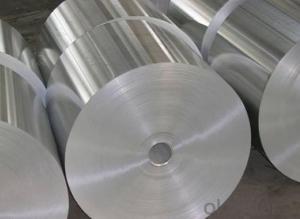Aluminum foil, a common household item, has been a staple in kitchens for decades. Its uses range from wrapping leftovers to shining shoes. But did you know that this versatile material can also be harnessed to cook food using the power of the sun? That’s right; aluminum foil can be transformed into a DIY solar oven, a sustainable and energy-efficient cooking method that can be a fun and rewarding project for anyone interested in green living.
The Magic of Aluminum Foil
Aluminum foil is a thin sheet of aluminum that is both lightweight and highly reflective. Its ability to reflect up to 95% of the sun’s rays makes it an ideal material for capturing solar energy. When used in a solar oven, the foil’s reflective properties can concentrate sunlight and convert it into heat, which is then used to cook food.
Why Go Solar?
With the increasing awareness of environmental issues and the need for sustainable living, solar energy has become a popular alternative to traditional energy sources. A DIY solar oven not only reduces your carbon footprint but also saves on energy bills. It’s a practical solution for those looking to embrace a greener lifestyle.
How It Works
A solar oven works by using a combination of reflective surfaces and insulation to trap and concentrate sunlight. The aluminum foil in the oven reflects the sun’s rays, which are then absorbed by a dark, heat-absorbing material, such as a cooking pot or a pizza stone. The heat is then trapped inside the oven, allowing the food to cook without any additional energy input.
Easy DIY Solar Oven Designs
There are several simple designs for DIY solar ovens that you can create using aluminum foil. Here are a few ideas to get you started:
1. Cardboard Box Oven: This design uses a simple cardboard box lined with aluminum foil on the inside. The cooking pot is placed in the center, and the box is angled towards the sun to maximize reflection.
2. Parabolic Reflector Oven: For a more advanced design, you can create a parabolic reflector using a curved surface made of aluminum foil. This design focuses sunlight onto a single point, generating intense heat for faster cooking.
3. Greenhouse Effect Oven: Another approach is to use the greenhouse effect by placing a transparent cover, such as plastic wrap or glass, over the aluminum foil. This traps the heat inside, allowing for more even cooking.
The Art of Cooking with Sunlight
Cooking with a solar oven requires a bit of patience and practice, but the results can be delicious and satisfying. Here are some tips for getting the most out of your solar cooking experience:
– Choose the Right Time: The best time to use a solar oven is during peak sunlight hours, typically between 10 a.m. and 3 p.m.
– Adjust for the Seasons: The angle of the sun changes with the seasons, so you’ll need to adjust the angle of your oven accordingly to maintain optimal cooking conditions.
– Experiment with Recipes: While solar ovens work best with recipes that require slow cooking, such as stews and baked goods, don’t be afraid to experiment with different dishes.
– Safety First: Always remember to handle your solar oven with care, especially when it’s in use, as the internal temperature can get quite high.
The Future of Solar Cooking
As technology advances, the potential for solar cooking is only going to grow. With more efficient designs and materials, solar ovens could become a staple in households around the world, providing a sustainable and cost-effective way to cook food.
Conclusion
Aluminum foil and solar energy may seem like an unlikely duo, but together they form the basis of a simple, sustainable, and innovative cooking method. A DIY solar oven is not only a fun project but also a practical solution for those looking to reduce their environmental impact and save on energy costs. So, the next time you’re wrapping up leftovers or shining your shoes, remember the power that aluminum foil holds and consider giving solar cooking a try.

